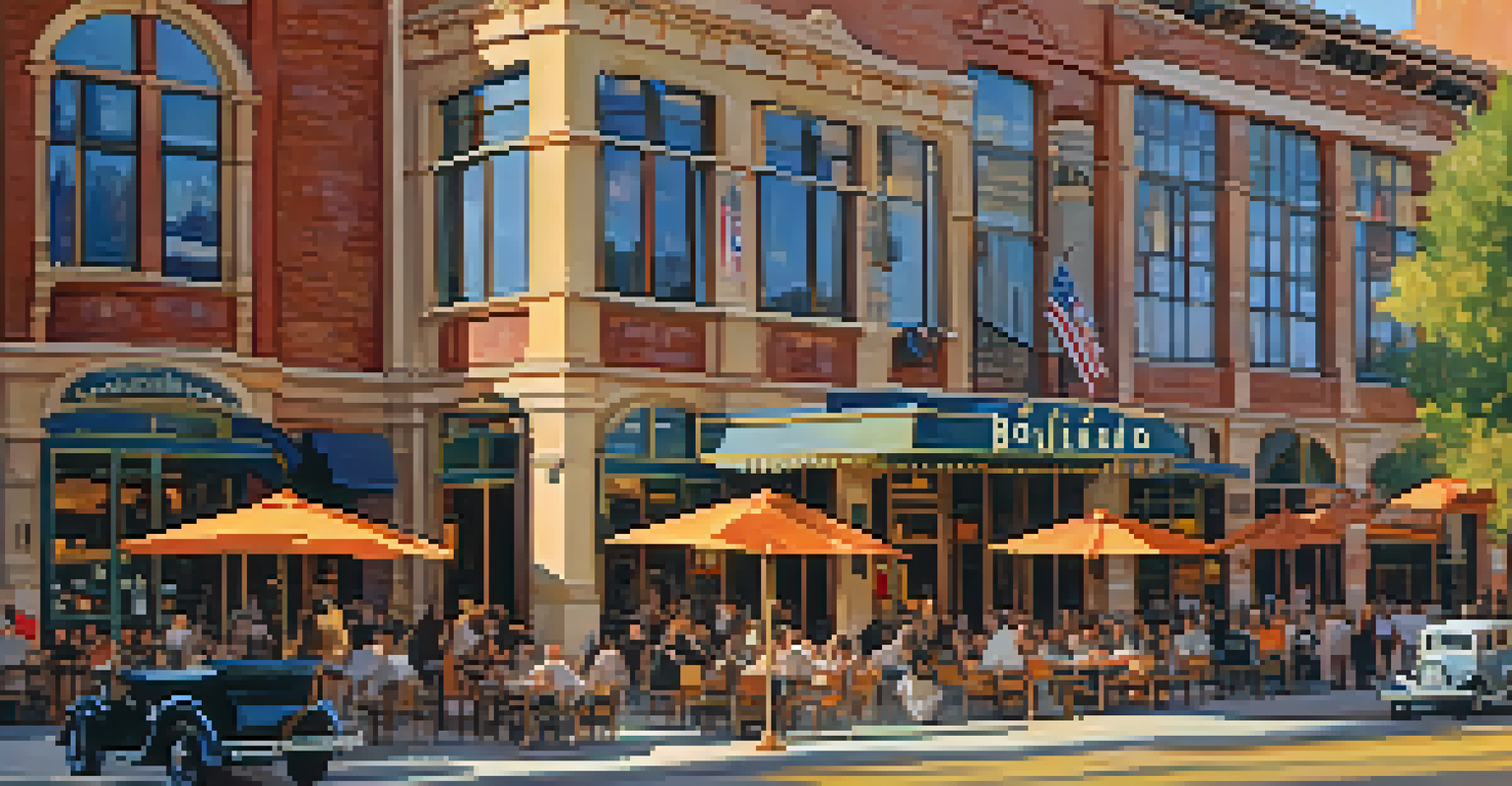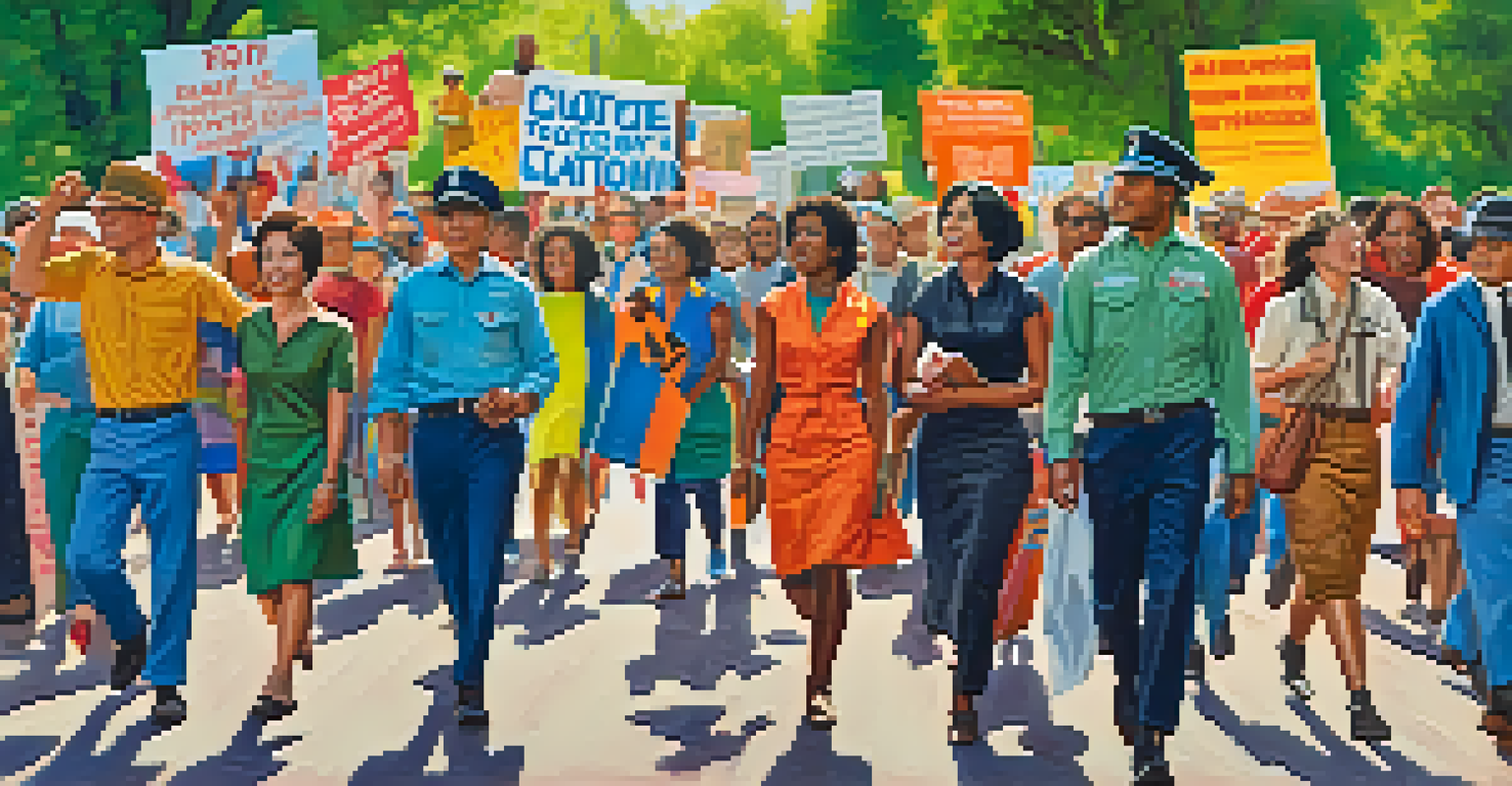20th Century Changes: Boulder's Urban and Cultural Growth

The Early 20th Century: Foundations of Boulder’s Growth
As the 20th century dawned, Boulder was a small town with a rich history rooted in mining and agriculture. The population was modest, and the community was tightly knit, often gathering around local events and markets. However, the arrival of the University of Colorado in 1876 began to sow the seeds for future growth, establishing a foundation for educational and cultural development that would significantly shape the city.
The greatest danger in times of turbulence is not the turbulence; it is to act with yesterday's logic.
By the 1900s, Boulder was starting to attract new residents, drawn by its stunning natural beauty and the promise of educational opportunities. The combination of the university and the picturesque Flatirons created an appeal that began to attract artists, intellectuals, and families alike. This influx of diverse populations began to enrich Boulder’s cultural fabric, leading to a vibrant community that embraced innovation and creativity.
Boulder’s early 20th-century growth laid the groundwork for its evolution into a cultural hub. The establishment of parks and public spaces, like Chautauqua Park in 1898, provided venues for community gatherings and cultural events, fostering a sense of belonging. As the population grew, so did the demand for cultural services, setting the stage for the dynamic changes that would follow in the decades to come.
The 1920s: Economic Expansion and Cultural Flourishing
The 1920s marked a period of economic expansion for Boulder, with a surge in construction and the establishment of new businesses. This era saw the development of iconic buildings, such as the Boulderado Hotel, which became a symbol of the city’s burgeoning identity. The local economy thrived as tourism began to take hold, attracting visitors eager to experience Boulder's charm.

Culturally, this decade was vibrant, as the arts began to flourish alongside economic growth. The Boulder Arts and Crafts Society, founded in 1922, showcased local talent and encouraged community engagement. This emphasis on the arts fostered a creative spirit that would continue to influence Boulder's identity in the years to come.
Cultural Growth Drives Community Spirit
Boulder's evolution into a cultural hub was fueled by its rich history, community events, and the influence of the University of Colorado.
Despite the economic prosperity, the 1920s also set the stage for challenges. The Great Depression loomed on the horizon, but the resilience of Boulder’s community would soon come into play. As the decade closed, the foundation for a culturally rich and economically diverse city was firmly established, ready to face the trials that lay ahead.
The 1930s: Resilience Amidst the Great Depression
As the Great Depression gripped the nation in the 1930s, Boulder faced significant economic challenges. Many residents struggled to make ends meet, and local businesses suffered as tourism declined. However, the community's resilience shone through, as neighbors supported one another, often sharing resources and skills to cope with the hardships.
Change is the law of life. And those who look only to the past or present are certain to miss the future.
During this time, cultural initiatives became vital for maintaining morale. The establishment of the Works Progress Administration (WPA) led to public art projects and improvements in local infrastructure, which contributed to community pride. These projects not only beautified Boulder but also provided jobs, showcasing the city's commitment to supporting its citizens during tough times.
The arts continued to play a crucial role in Boulder's identity throughout the 1930s, with many local artists and musicians finding ways to express their experiences. This decade reinforced the notion that culture could be a powerful tool for unity and resilience, setting the stage for Boulder’s continued growth in both urban and cultural landscapes.
The 1940s: World War II and Its Cultural Impact
The 1940s were marked by the enormous impact of World War II, which brought both challenges and opportunities to Boulder. As the war effort ramped up, many local industries shifted focus, contributing to military supplies and equipment. This shift created jobs and led to an influx of workers and their families, further diversifying Boulder's population.
Culturally, the war affected the community in profound ways. With many residents serving overseas, the city rallied together in support, organizing events to boost morale and raise funds for the troops. This sense of shared purpose fostered a strong community spirit that would resonate long after the war.
Resilience Amid Economic Challenges
Despite facing hardships like the Great Depression, Boulder’s community exhibited resilience by supporting one another and fostering cultural initiatives.
Post-war, Boulder experienced a cultural awakening. Veterans returning home brought new perspectives and ideas, enriching the local arts scene. This era set the stage for the city to evolve into a center for education, innovation, and cultural expression, paving the way for the dynamic community that we recognize today.
The 1950s: Suburban Expansion and Cultural Shifts
The 1950s brought significant suburban expansion to Boulder, as returning veterans and their families sought affordable housing. The population swelled, prompting the development of new neighborhoods and schools, transforming the landscape of the city. This suburban trend mirrored national patterns, as many Americans sought the 'American Dream' of homeownership and stability.
Culturally, this decade was a time of transition, as Boulder began to embrace modernity while still holding onto its rich history. The arts continued to thrive, with new galleries and music venues popping up to accommodate the growing population. This blending of old and new helped shape Boulder’s distinctive character, balancing tradition with innovation.
As Boulder embraced its suburban growth, community leaders recognized the importance of preserving the city’s culture amidst rapid changes. Initiatives to promote local arts, history, and environmental stewardship emerged, laying the groundwork for the future. These efforts would ensure that Boulder remained a vibrant cultural hub even as it expanded and evolved.
The 1960s: A Cultural Revolution and Environmental Awareness
The 1960s were a transformative period for Boulder, marked by a cultural revolution that embraced social change and environmental awareness. The civil rights movement and anti-war protests resonated strongly within the community, leading to a surge of activism among residents. This spirit of engagement fostered a culture of inclusivity and social responsibility that has persisted in Boulder to this day.
During this decade, the environmental movement gained momentum, with citizens advocating for the preservation of Boulder’s natural beauty. The establishment of the Open Space program in 1967 reflected the community's commitment to protecting its surroundings, ensuring access to nature for future generations. Boulder's emphasis on sustainability became a defining aspect of its identity.
Innovation and Diversity Shape Boulder
The influx of diverse populations and the establishment of tech companies have turned Boulder into a center of creativity, sustainability, and cultural celebration.
Culturally, the 1960s were vibrant, with music, art, and literature flourishing. Local events such as the Boulder Folk Festival highlighted the city’s artistic talent and brought people together in celebration. This decade solidified Boulder’s reputation as a creative and progressive city, setting the tone for its future growth and cultural development.
The 1970s and Beyond: Innovation and Cultural Diversity
The 1970s marked the beginning of a new era for Boulder, characterized by innovation and cultural diversity. The establishment of tech companies and research institutions attracted a new wave of residents, further enriching the community. This influx brought diverse perspectives and ideas, transforming Boulder into a hub for creativity and entrepreneurship.
Culturally, the city continued to thrive, with a plethora of festivals and events celebrating its heritage and diversity. The Boulder International Film Festival and the Boulder Arts Festival became annual highlights, showcasing local talent and fostering a sense of community pride. These events not only entertained but also connected residents, reinforcing Boulder's unique cultural identity.

As Boulder moved into the late 20th century and beyond, its commitment to innovation and sustainability remained strong. The city became a model for environmentally conscious urban development, blending modernity with a dedication to preserving its natural surroundings. This ongoing evolution has ensured that Boulder remains a vibrant, culturally rich community that honors its past while looking to the future.